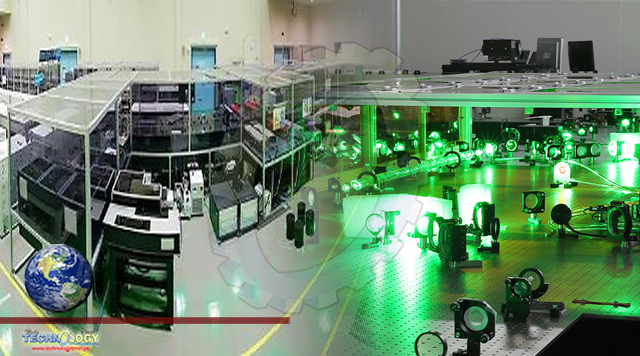South Korean researchers have set a milestone in the history of powerful laser beam research by achieving the highest-ever laser intensity that would enable scientists to explore novel physical phenomena occurring under extreme physical conditions and various astrophysical phenomena occurring in the universe.

The state-run Institute for Basic Science (IBS) said that its research team led by Nam Chang-hee, director of the Center for Relativistic powerful Laser Science (CoReLS), has realized the unprecedented laser intensity of 1023 W/cm2. W/cm2 means watts per centimeter square, a value for energy intensity. The team’s research paper was published on the website of Optica, a peer-reviewed scientific journal.
“This has been a milestone that has been pursued for almost two decades by many laser institutes around the world,” the institute said in a statement. The previous record was set in 2004 when a team from the University of Michigan demonstrated 1022 W/cm2.
An ultrahigh intensity laser is an important research tool in several fields of science. Ultra-high laser intensity requires a laser with extremely high power output and focusing it to the smallest spot as possible.
While continuous-wave lasers are limited to megawatt-scale intensity, far higher peak power output on the order of petawatt (PW) is possible in pulsed laser systems by delivering the energy in the time scale as short as femtoseconds. PW is a unit of power and equal to one quadrillion watts.
Several ultrahigh power laser facilities with outputs of 10 PW and beyond have been built or are planned, with a study from Osaka University proposing a concept prototype for an “exawatt” class laser, IBS said, adding Nam’s team has operated a four PW laser system.
In April, Nam’s team achieved the record-breaking milestone of 1023 W/cm2 by employing several special techniques such as deformable mirrors and an off-axis parabolic mirror that was used to focus a 28 cm laser beam down to a spot only 1.1 micrometers wide.
A diffraction-limited tight focusing can be obtained only with a clean laser beam without wave front distortion. Nam has secured a clean laser beam using a set of deformable mirrors.
“With the highest powerful laser intensity achieved ever, we can tackle new challenging areas of experimental science, especially strong field quantum electrodynamics that has been dealt with mainly by theoreticians,” Nam said.
In particle physics, quantum electrodynamics (QED) is the relativistic quantum field theory of electrodynamics and describes how light and matter interact.
Nam said that scientists are able to explore new physical problems of electron-photon scattering, known as Compton scattering, and photon-photon scattering called the “Breit-Wheeler process” in the nonlinear regime.
“This kind of research is directly related to various astrophysical phenomena occurring in the universe and can help us to further expand our knowledge horizon.”
Compton scattering is the scattering of a photon by a charged particle, usually an electron. If it results in a decrease in energy of the photon which may be an X-ray or gamma-ray photon, it is called the Compton effect.
The Breit–Wheeler process is a physical process in which a positron-electron pair is created from the collision of two photons. It is the simplest mechanism by which pure light can be potentially transformed into matter.
Although this mechanism is still one of the most difficult to be observed experimentally on Earth, it is of considerable importance for the absorption of high-energy photons traveling cosmic distances.
Originally published at Aju business daily